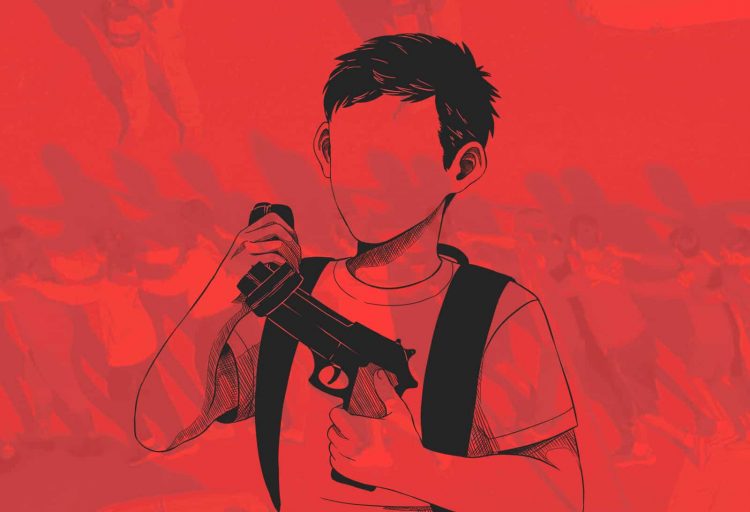In the wake of the violence brought on by guns in universities, it’s clear something needs to be done about gun control and education in universities. What’s less clear is exactly what should be changed.
2015 has seen 23 shootings in universities, leaving 27 people injured and 18 people dead according to Time. This accounts for a small percentage of the 325 mass shootings reported by shootingtracker.com that have already occurred in 2015.
Only three of the universities where shootings occurred this year allow people with a conceal to carry license to have a firearm on campus, which begs the question: If more universities employed this policy would universities would see less gun violence?
A person who has been trained to use the weapon they’re carrying could theoretically convince an active shooter to lower their weapon or kill the active shooter to prevent bystanders from being killed.
This solution is flawed, however. The likelihood of someone who has their conceal to carry license present with their weapon at every mass shooting is small, and more than that, this figurative answer to the problem still results in violence.
Ideally, the outcome would be that no one be injured or killed due to gun violence on university campuses.
It’s also worth pointing out that the shooting at Utah Valley University, a university with the aforementioned policy, was accidental.
No matter how trained a person is with their weapon, an accident can happen. This accident only resulted in injury, but the consequences could have been fatal.
Also, that the majority of the universities where shootings occurred this year had a weapon policy identical to APSU’s: All weapons are prohibited from campus, excluding those carried by campus police officers.
This policy didn’t prevent the shooters from bringing their weapons to campus, pointing to another glaring issue in the gun policy debate: the lack of restrictions and regulations put on gun ownership and the mass quantity of guns available in the U.S.
According to the Washington Post, there are now more guns than people in the U.S. The population stands at around 317 million people, while there are around 357 million guns. That’s more than 1.1 guns per capita in the U.S., discounting guns illegally brought into or exported out of the country and guns that are lost, broken down or otherwise destroyed.
The sheer availability of weapons may account for some of the gun violence seen every day. What may be hindering gun safety more than that are the lax background checks people must pass before obtaining a gun if the person in question chooses to go through a firearms dealer.
No background check is required of someone going through a private dealer, a law some refer to as the “gun show loophole.” Tennessee is one of several states that doesn’t require a background check of individuals purchasing a gun through a private dealer.
The New York Times investigated and reported on how 11 shooters from high-profile mass shootings in recent history obtained their guns. Time after time the background checks put in place to prevent such tragedies failed to do so, sometimes through human error, but oftentimes through a flaw in the system.
Some of the most startling examples of this are in the cases of John R. Houser, Spc. Ivan Antonio Lopez and James E. Holmes.
In 2006, Houser was denied a permit to carry a weapon because he was accused of domestic violence and soliciting arson, and he was sentenced to a psychiatric hospital in 2008.
He was able to purchase a firearm in Alabama in 2014, however, and shot and killed two people in a movie theater in Lafayette, Louisiana on July 23, 2015.
Lopez served a four month deployment in Iraq in 2011. When he returned, he told his superiors he had suffered a severe head injury, although officials said he was never involved in combat.
Lopez was then evaluated for post-traumatic stress disorder. He saw a military psychiatrist, and was being treated for anxiety and depression and was taking a prescription to help him sleep in March 2014 when he legally obtained a semiautomatic pistol he used to kill three and wound 16 on April 2, 2014 in Fort Hood, Texas.
In the months leading up to July 10, 2012, when he killed 12 and injured 70 in a movie theater in Aurora, Colorado, James E. Holmes legally acquired over 3,000 rounds of ammunition for handguns, 3,000 rounds for a semiautomatic rifle and 350 shells for a 12-gauge shotgun from the Internet.
He was also able to legally purchased four guns despite seeing a psychiatrist.
These are only three of several examples, but the overwhelming trend is the safeguards in place simply don’t work.
In order for university policies to change and for students to feel safe, the national policy on weapons must be critically examined and modified sooner rather than later.




